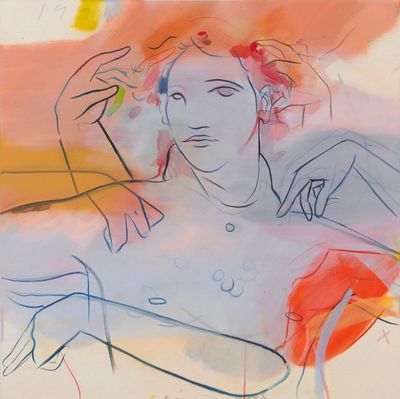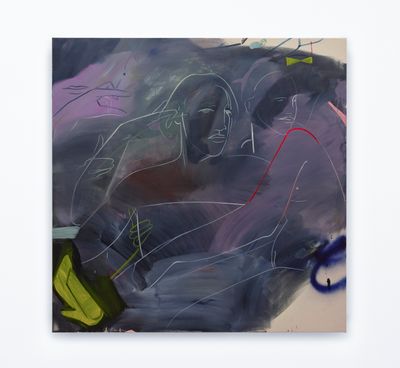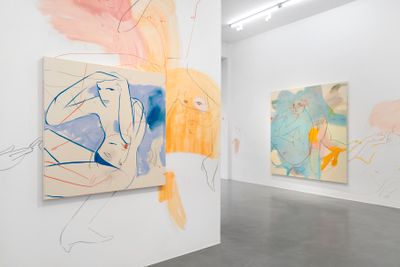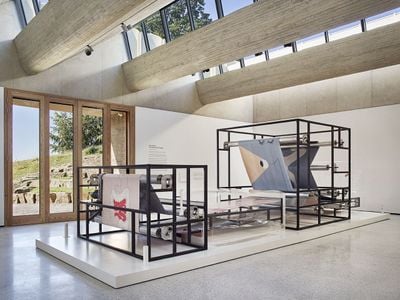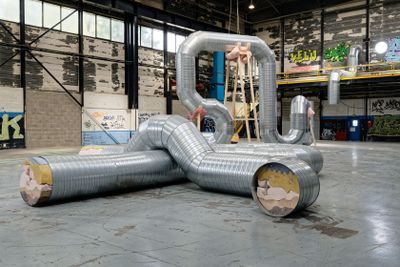The Art and Science of Collecting Emerging Art
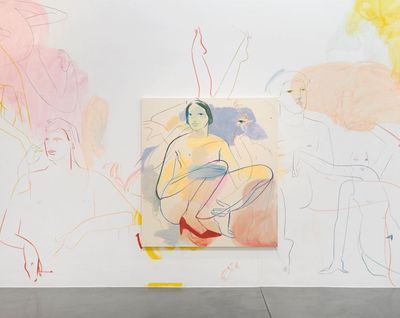
Exhibition view: France-Lise McGurn, Percussia, Simon Lee Gallery, London (24 January–22 February 2020). Courtesy the artist and Simon Lee Gallery. Photo: Ben Westoby.
As a collector, how can you determine an emerging artist's long-term success? Until recently, factors such as critical acclaim, curatorial attention, and exhibitions with blue-chip galleries and institutions were known to be important, but no one could categorically point to why some talented artists could make a life out of their art whilst others do not. It was art-world alchemy.
In 2018, however, a group of writers and data scientists took a data-driven approach to the question. Co-authors Samuel P. Fraiberger, Roberta Sinatra, Magnus Resch, Christoph Riedl, and Albert-László Barabási published their study 'Quantifying reputation and success in art' with Science in November that year.
Looking at a half-million artists' careers between 1980 and 2016, they found that early recognition by prestigious museums, galleries, and curators was an accurate way of predicting long-term success, with artists becoming buoyed within the network. Of the 4,058 artists who started out in the best exhibition venues, almost 60 percent maintained that status throughout their careers.
The study's main conclusion is that it is critical for artists to show in the right places early on—the list includes the usual suspects, like The Museum of Modern Art, New York, Tate Modern, London, and the Centre Pompidou, Paris. What this research doesn't capture, however, is artists who do fantastically well commercially without entering the network at all.
That being said, I've been following France-Lise McGurn and Holly Hendry—both young, exciting British artists—and it turns out that they fit neatly into the data-driven theory put forward by Fraiberger et al.
France-Lise McGurn (b. 1983, United Kingdom) works mainly with paint, creating works that drip, spill, and dance from the canvas into the gallery space. She graduated from the Royal College of Art in 2012, and five years later was invited to join the Tate St Ives Artists Programme. Just before, the artist had a solo exhibition with Bosse & Baum in London (Mondo Throb, 5 November–18 December 2016), which was followed by solo exhibitions at Alison Jacques Gallery in London (Archaos, 4–27 May 2017), and Frutta in Glasgow (0141, 22 September–17 November 2018), both well-respected galleries that exhibit at fairs including Frieze London.
What this research doesn't capture, however, is artists who do fantastically well commercially without entering the network at all.
Following her Tate St Ives commission, McGurn created a site-specific installation inspired by sources including the Ibiza club scene and the 1993 rom-com Sleepless in Seattle at Tate Britain in 2019 to critical acclaim (Sleepless, 29 June–8 September 2019).
Within seven years of her master's, McGurn showed with the Tate—one of the world's leading museums—twice. Shortly afterwards, Simon Lee Gallery, which represents contemporary art stars such as Donna Huanca and George Condo, announced it would be representing McGurn. With spaces in London, New York, and Hong Kong, representation with the gallery signals more opportunities, including her first high-profile solo exhibition in London (Percussia, 24 January–22 February 2020). Around the same time, the artist filled Tramway in Glasgow with a series of neon mobile sculptures for her solo exhibition In Emotia (18 January–22 March 2020).
Holly Hendry (b. 1990, United Kingdom) creates monumental sculptures that use industrial reference points alongside a variety of unusual, humorous, and quotidian materials. She graduated from the Royal College of Art in 2016, holding her first U.K. institutional solo exhibition one year later at BALTIC Centre for Contemporary Art in Gateshead (Wrot, 18 February–24 September 2017). In 2018, Hendry was chosen by Helen Pheby—the head of curatorial programme at Yorkshire Sculpture Park—and Selfridges, as the inaugural artist for the Art Block commission at Selfridges' flagship London store.
In 2018, Hendry participated in the Liverpool Biennial with a collection of four works that combined material references to Liverpool's industrial heritage with comic elements like cartoonish bones, and received a Rome Fellowship in Contemporary Art at the British School at Rome.
The unusual scale and humour of Hendry's works encourage visitors to consider sculpture in conversation with the surroundings rather than separate and apart—the Holy Grail of public art, and in 2019 she was awarded the Experimental Architecture Award by The Arts Foundation Futures Awards. That year, she worked once more with curator Helen Pheby on a kinetic sculpture, titled Slacker (2019), for a solo presentation at Yorkshire Sculpture Park (The Dump is Full of Images, 21 September 2019–19 April 2020). Around the same time, her immense work Deep Soil Thrombosis (2019), composed of air conditioning pipes, plaster, and jesmonite, was presented within Fagor Factory—an ex-appliance manufacturer—as part of the 15th Lyon Biennale (18 September 2019–5 January 2021).
Looking ahead, two major exhibitions presenting the artist's work have been rescheduled for 2021 as a result of the coronavirus pandemic, including the touring exhibition Breaking The Mould, Sculpture by Women since 1945, curated by Natalie Rudd and set to begin at Yorkshire Sculpture Park's Longside Gallery, along with the artist's solo exhibition, Indifferent Deep at De La Warr Pavillion in Bexhill on Sea, running between 2 January and 4 April 2021.
Within three years of graduating from her master's, Hendry has exhibited at two of the United Kingdom's leading institutions and is represented by Stephen Friedman Gallery, who will present her work in their 25th anniversary exhibition, opening 24 September and running to 7 November 2020. It's a stellar start—one that the scientists would argue gives Hendry—and McGurn—an almost 60 percent chance of a lifelong career.—[O]

